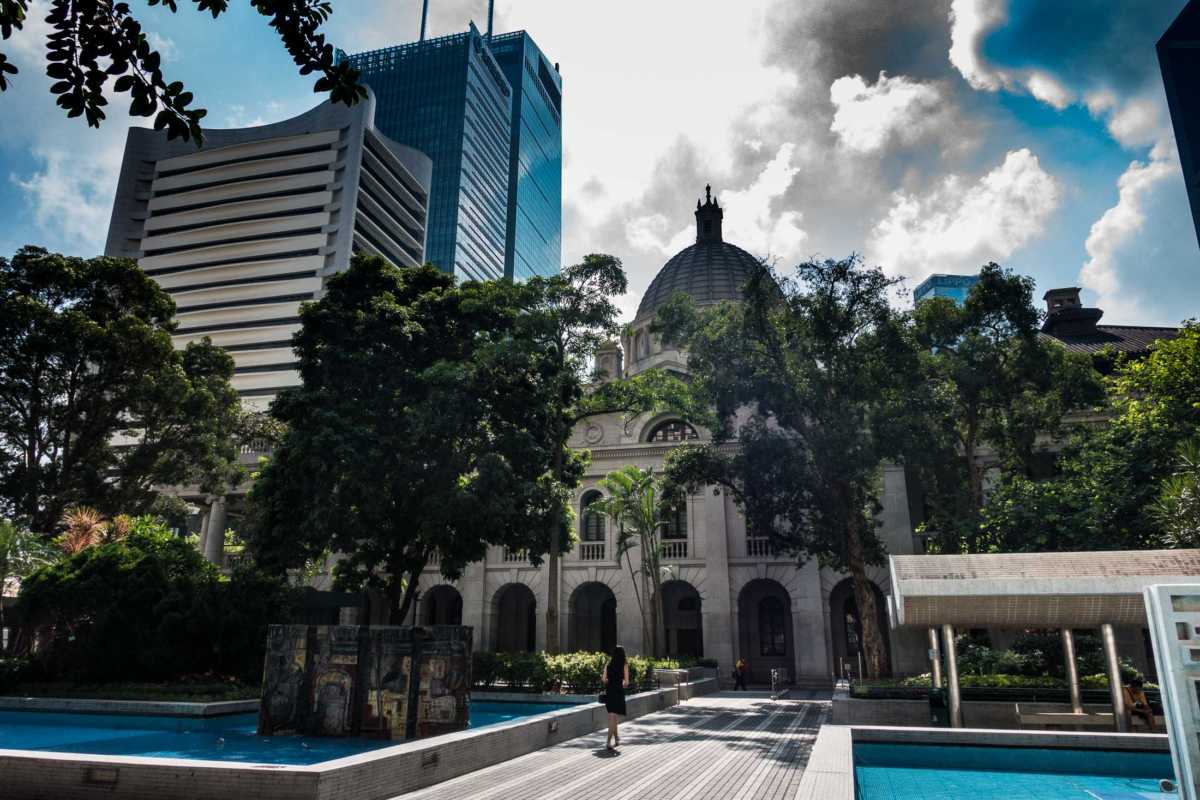
We were prepared to love Hong Kong. It is our first trip to China, and we were looking forward to easing into a very foreign environment by starting with (mostly) English speaking Hong Kong. It didn't disappoint.
So, based on our vast five-day experience, here are our recommendations.
Table of Contents
Getting to the city from the airport
One of the easier transfers ever. There's the Airport Express–a fast train just a short walk from the baggage claim and customs that takes you to the city. We were going to a hotel in Kowloon, so we took the train to the Kowloon station, and took a short taxi ride from there. Cost of the train was 150 Hong Kong dollars (HKD) ($19 USD) for two people and took about 20 minutes. The trains leave about every 10 minutes. When you get to Kowloon station, there's a taxi queue a short distance from the platform. Or, you can get on the MRT. (More on the MRT later.)
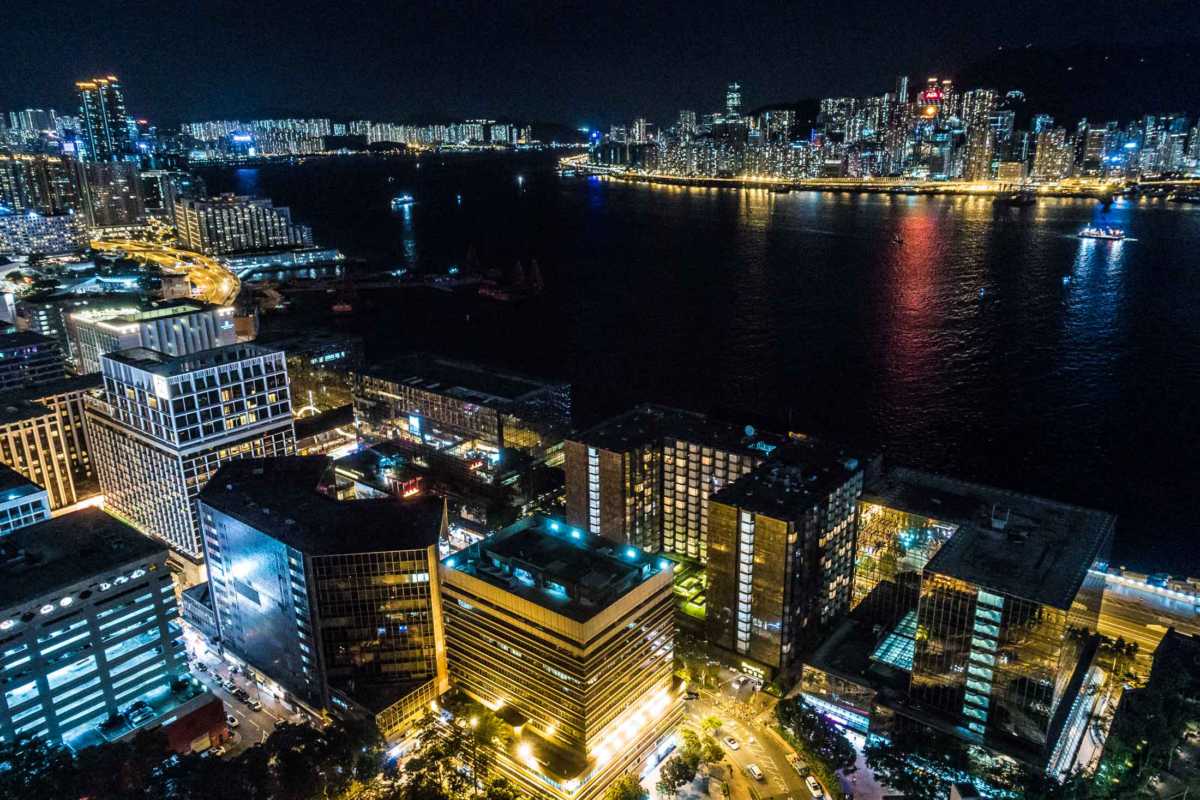
Where we stayed
Based on friends' recommendations, we booked the Hotel Panorama by Rhombus, in the Tsim Tsa Tsui (say that three times fast) area of Kowloon. It's a great location, within walking distance of most of the stuff you will want to see in Kowloon. And, as the name suggests, the views are stunning. You can just take the elevator up to the 40th Floor overlook, and Hong Kong island is there in all its incandescent glory. And, except for the breakfast, which I thought was a little expensive, it's a pretty good value for the money. Of course, almost all the restaurant food in Hong Kong is expensive, so maybe it isn't really so bad.
One of the very best things about it, too, is there is an MRT station about 50 meters away from the Panorama's front door.

Some of the sights
Other than the views from the Panorama, you should probably also take in the view from the opposite side of the harbor at the Hong Kong Peak. The best way to get there is on the Number 15 bus from the Central Bus Terminal, which is just across the street from the Central MRT station. (You take a pedestrian overpass over the street to get to the bus terminal.) From a different location, you can take a tram that takes you right up the mountain, but that costs 88 HKD ($12 US) round trip, including entrance to the Skyview Terrace at the top of The Peak. The Number 15 bus will set you back about $2 US for the same return trip, and you get to ride with the locals instead of the tourists.
Once you get to the top, there's a shopping mall that provides a free lookout over both sides of the peak, and you'll get views like this. An alternative is to pay 48 HKD ($6 US) for a bit higher view from the Skyview Terrace atop the other shopping center across the street. (That price is included in your tram ticket, as an option, if you want to take the tram instead of the bus.) As far as we could tell, the Skyview offers pretty much the same view off both sides, although there are probably fewer trees and other tourists in your way. But we settled for the free one. We're cheap that way. And besides, the trees on the hillside made a nice compositional element, if you ask me.
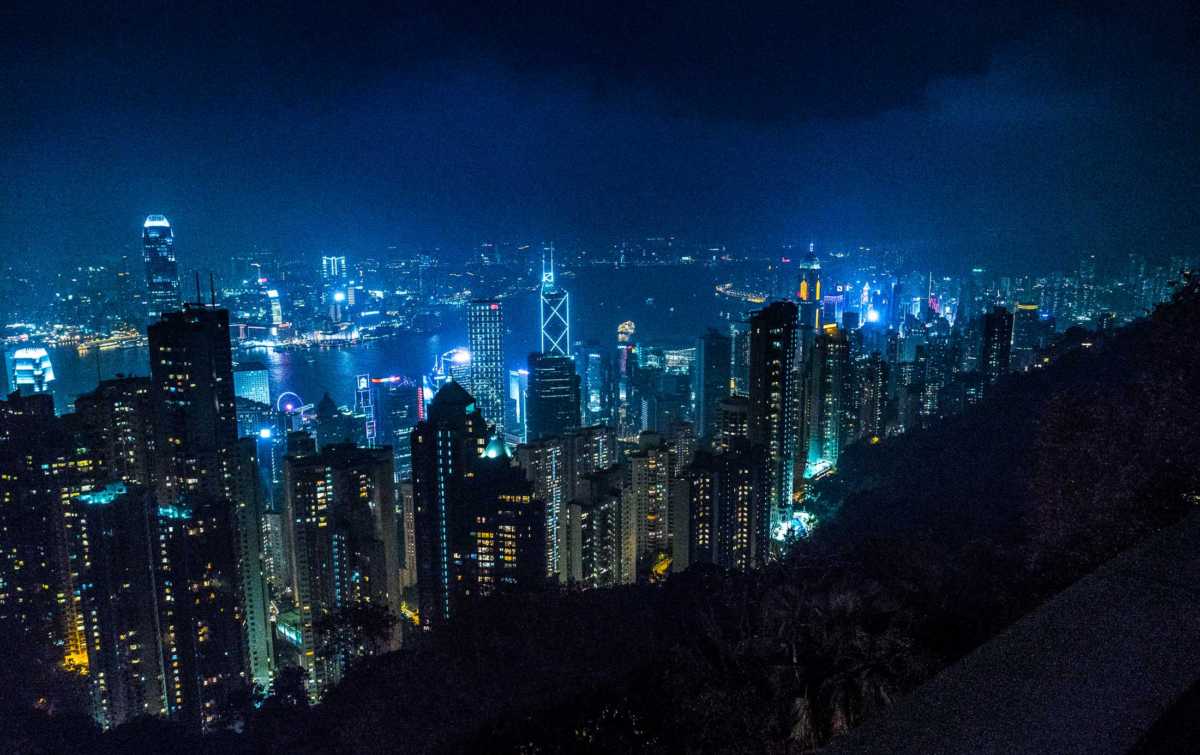
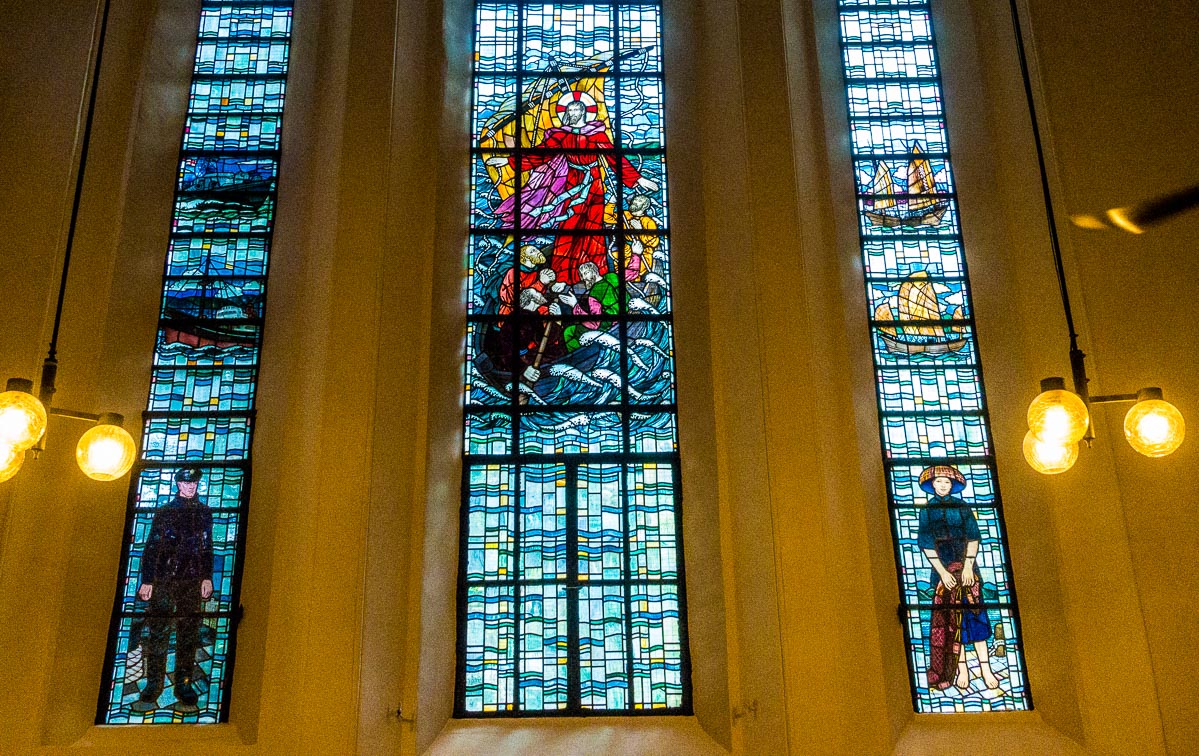
A couple of churches
Of course, because of Hong Kong's long history as an British colony, there are several Christian churches. We visited two: Saint John's Cathedral and Saint Andrew's. Both are architecturally a bit mundane–as most churches originally built as Anglican churches are. However, both have some interesting windows that are worth a look. In St. John's, there's an interesting treatment that features what looks like a British policeman or soldier and a barefoot Chinese woman. They flank an image of the story of Jesus in the boat with the apostles during the storm. I'm still puzzling out the allegorical significance of this juxtaposition.
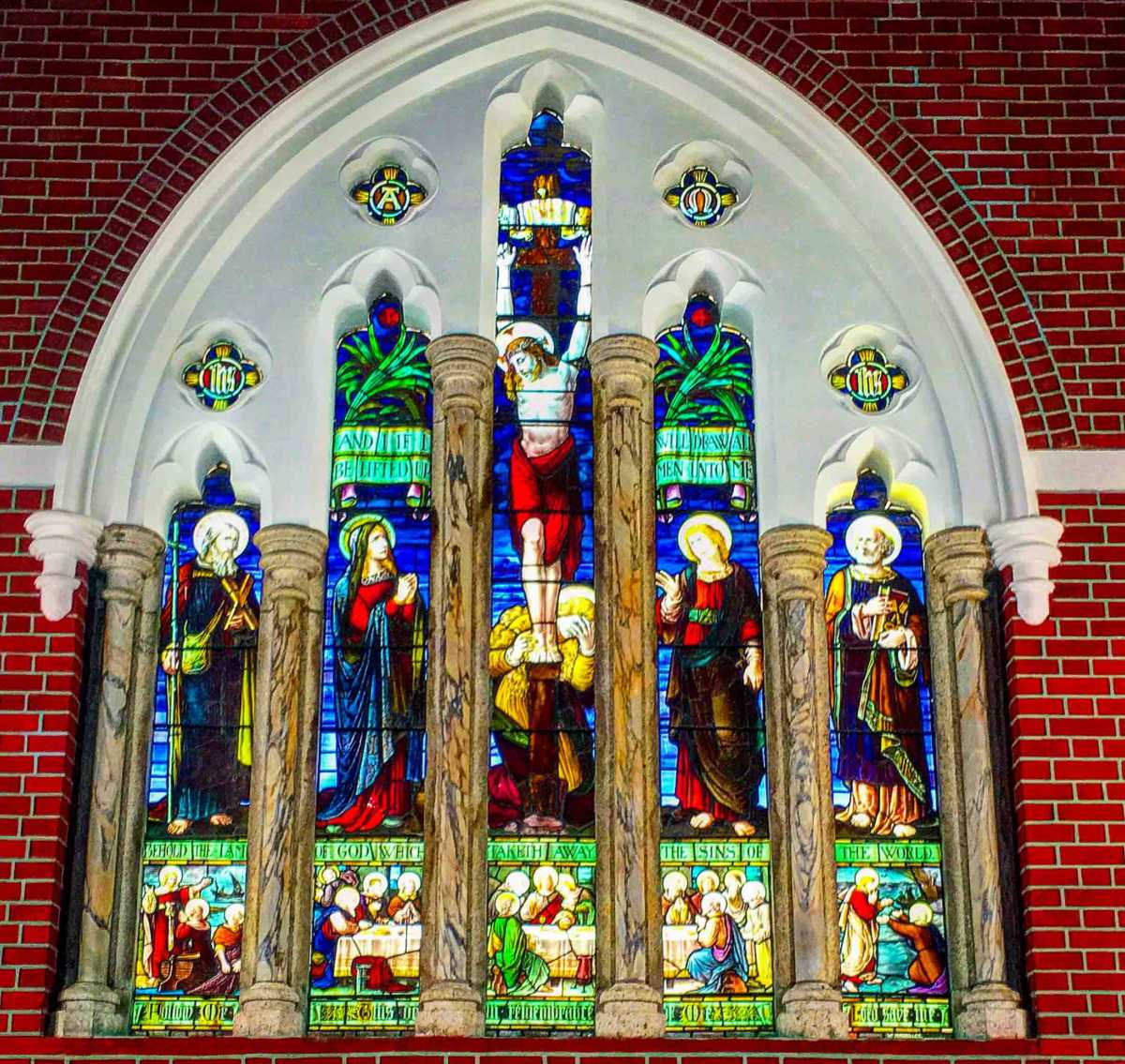
More interesting, though, are the William Morris windows in Saint Andrew's. There are two: the altar, and one in the baptistery. I love the look of the altar window, particularly the elongated arms of Christ on the cross, exaggerated to fit the opening. A nice artifice, without being artificial.
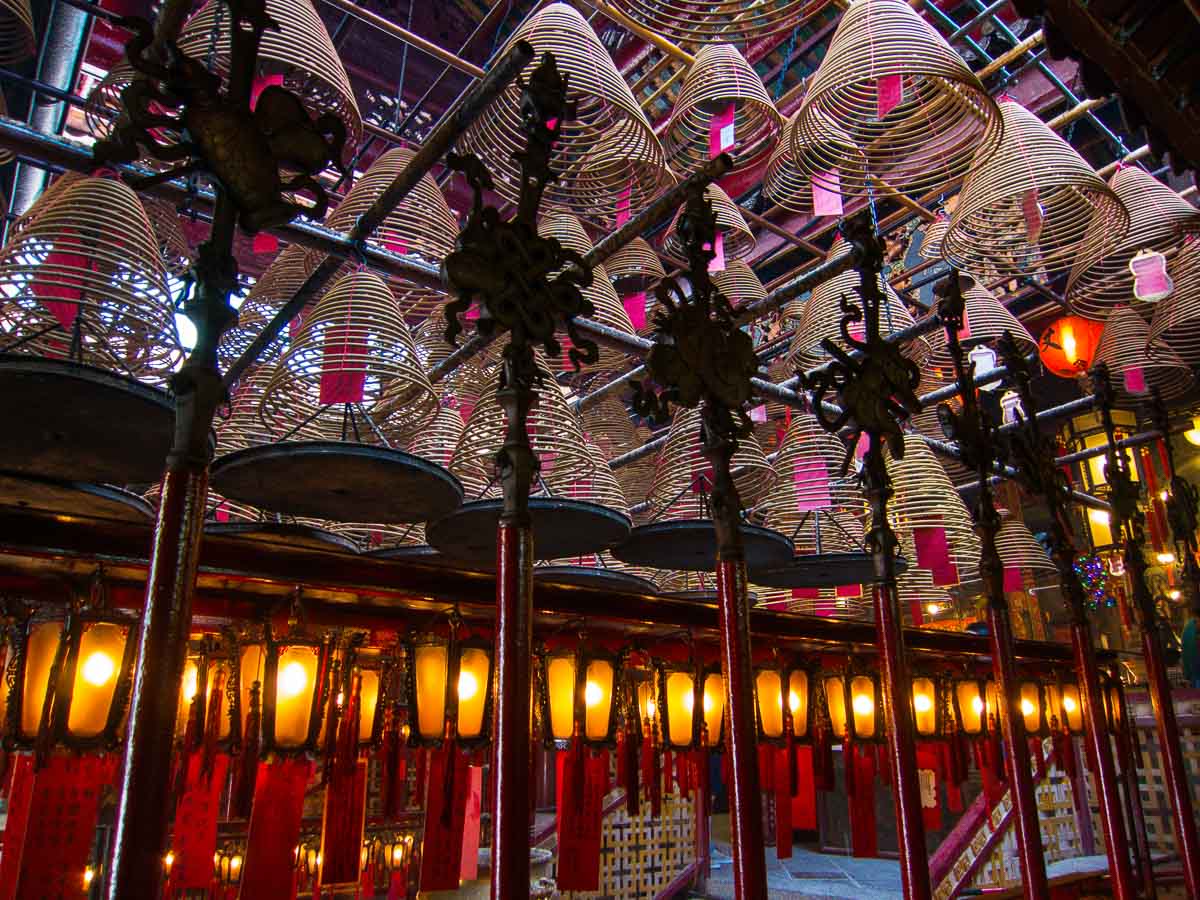
A temple or two–With gardens
As part of our Context Travel tour, we visited the famous Man Mo Temple. It's small, but packed with significance and worshippers. And the incense is overpowering. Huge incense spirals hover over rows of lanterns and keep the air redolent with devotion. I love how a small temple can become such an attraction. Perhaps because it's dedicated to the gods of literature and war–a heady combination.
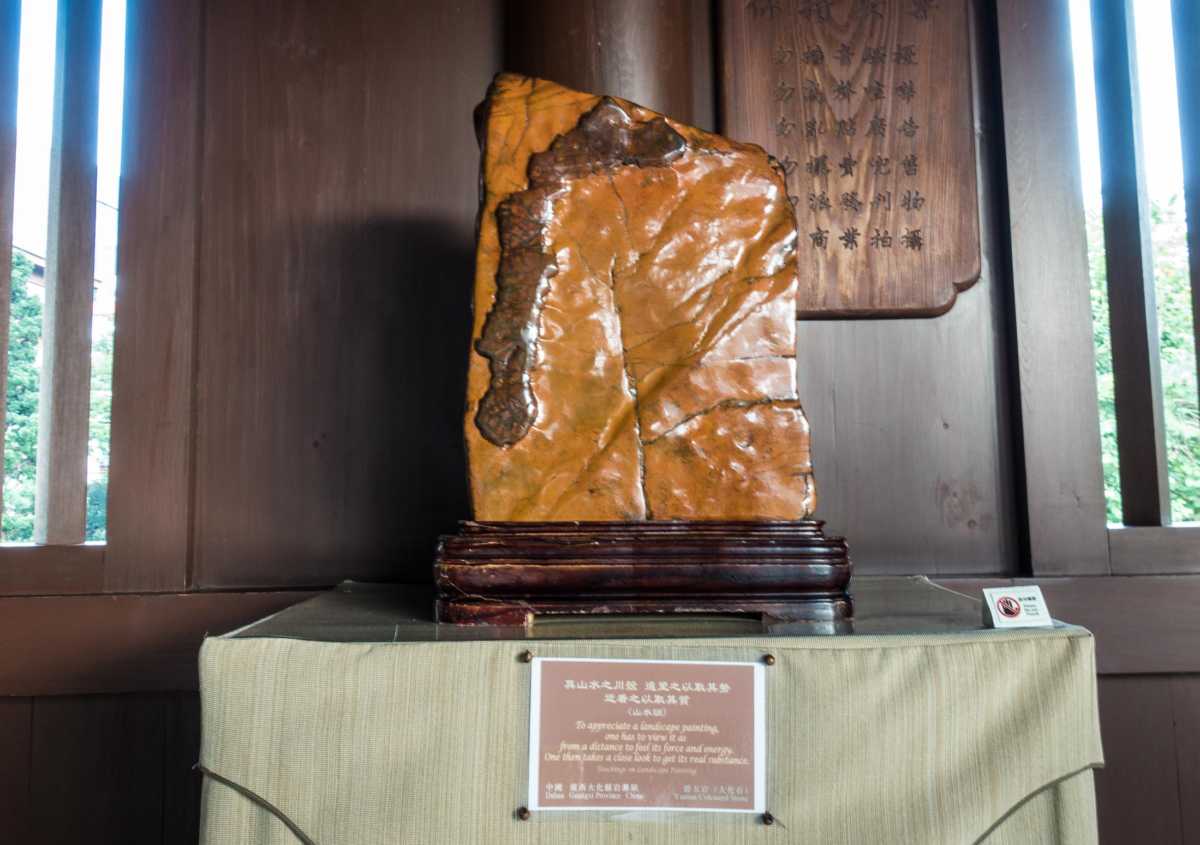
A larger attraction is the Chi Lin Nunnery. The nunnery itself is a large and spectacular, somewhat modern example of the Eastern Temple building art. Its inner courtyard is a meticulously kept garden that complements the sweeping roof lines. No photography is allowed inside the halls, so you won't see the various chapels here. But perhaps more interesting than the chapels are the couple of dozen “teaching stones” that line the gallery. They are all different, but are mindful of large river stones in their smoothness, and of jade in their obvious hardness and carving into natural shapes. Each has a legend, remindful of a Confucian or Buddhist truth.
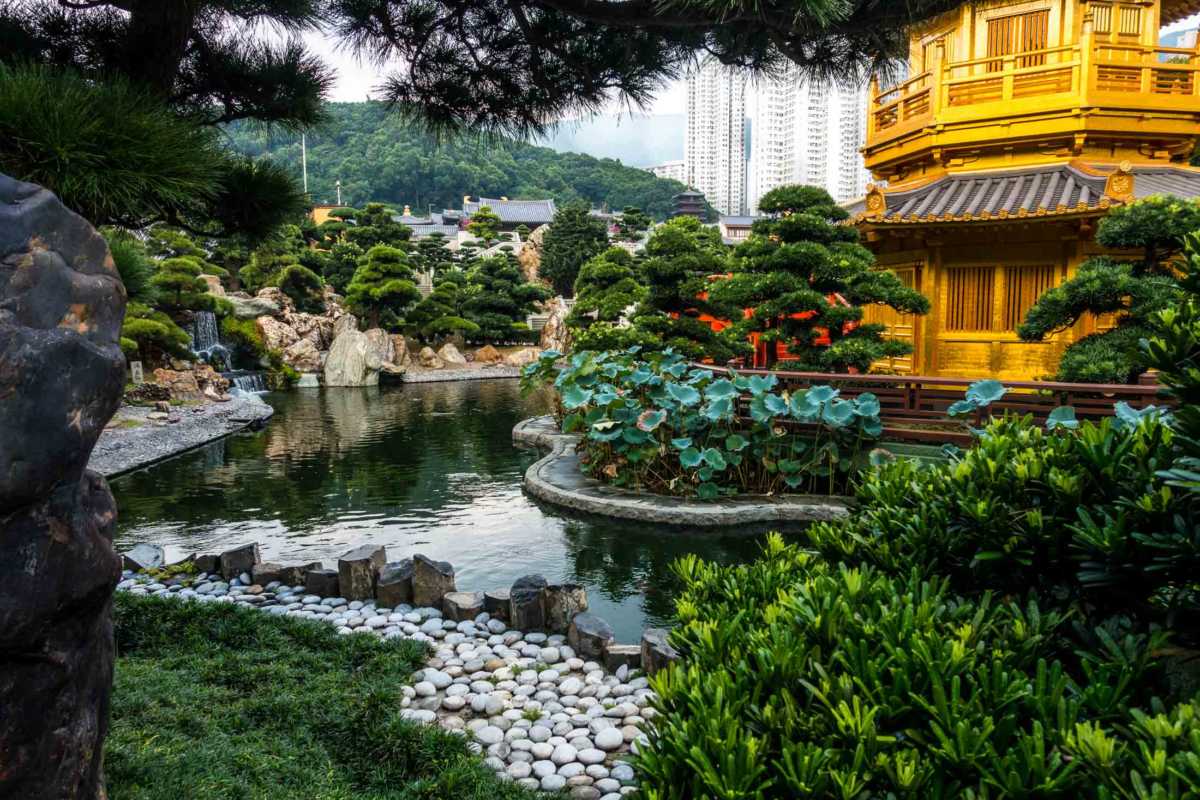
Adjacent to the nunnery is the Nan Lian Garden. You're led along a path that provides one stunning micro vista after another. What makes the garden even more remarkable is its placid setting in the midst of the relentless Hong Kong high rise tableaux. It takes probably about an hour to stroll the winding path through the garden. Every turn is rewarded with a new portrait of the Asian gardener's skill and artistry.
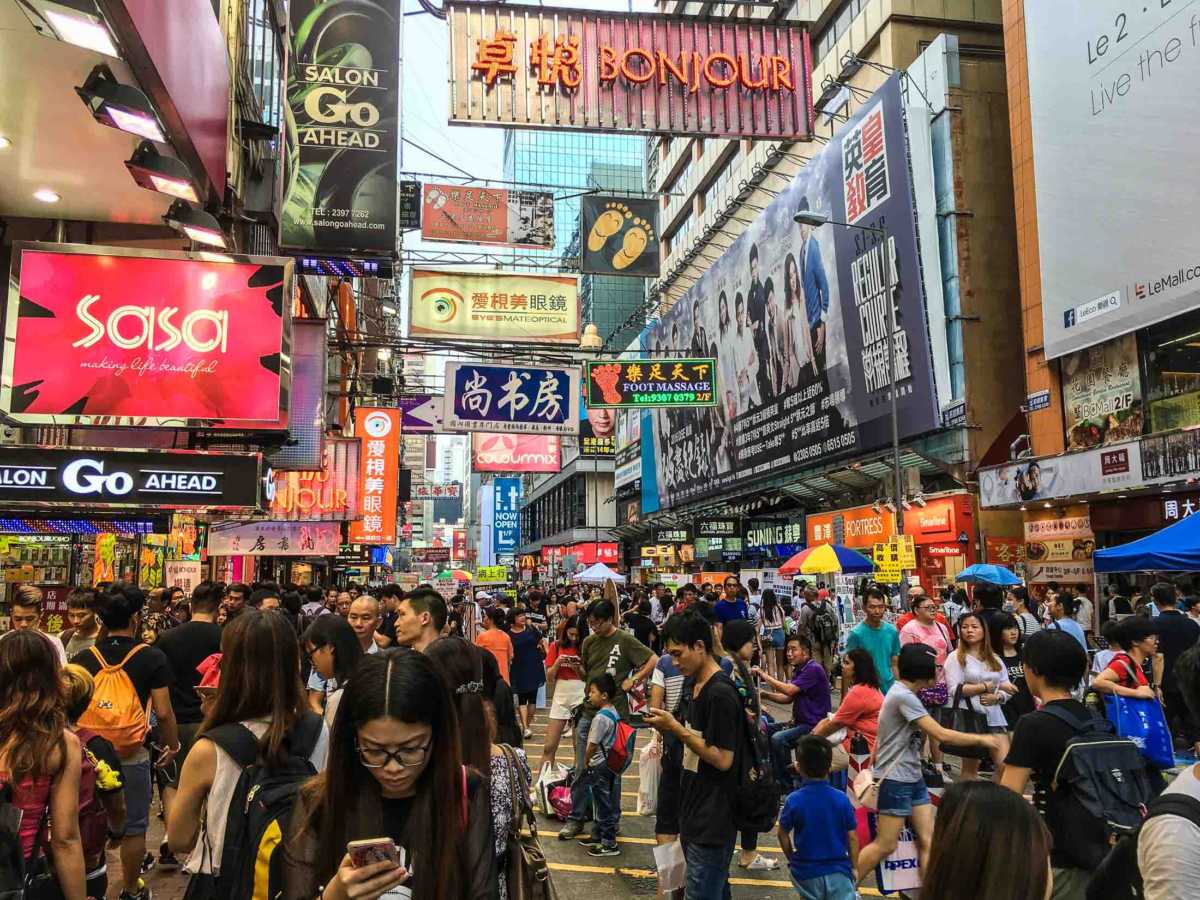
The street markets
The street markets are everywhere, but where they really overwhelm is on a Kowloon Sunday. On the streets parallel to Nathan Road are a non stop riot of stalls selling food, clothing, shoes, electronics, jewelry, and every other sort of junk you can imagine. Prepare to be a bit overwhelmed as there is very little space and less respite from the din and the crowds until you decide you've had enough and take a side street exit. But, until you do, it's the best experience of the true density of Hong Kong that you'll encounter.
There's also a flower market just up the street from One Dim Sum (see below.) While you are waiting for One Dim Sum, be sure to check out some of the most beautiful flower arranging you'll ever see.
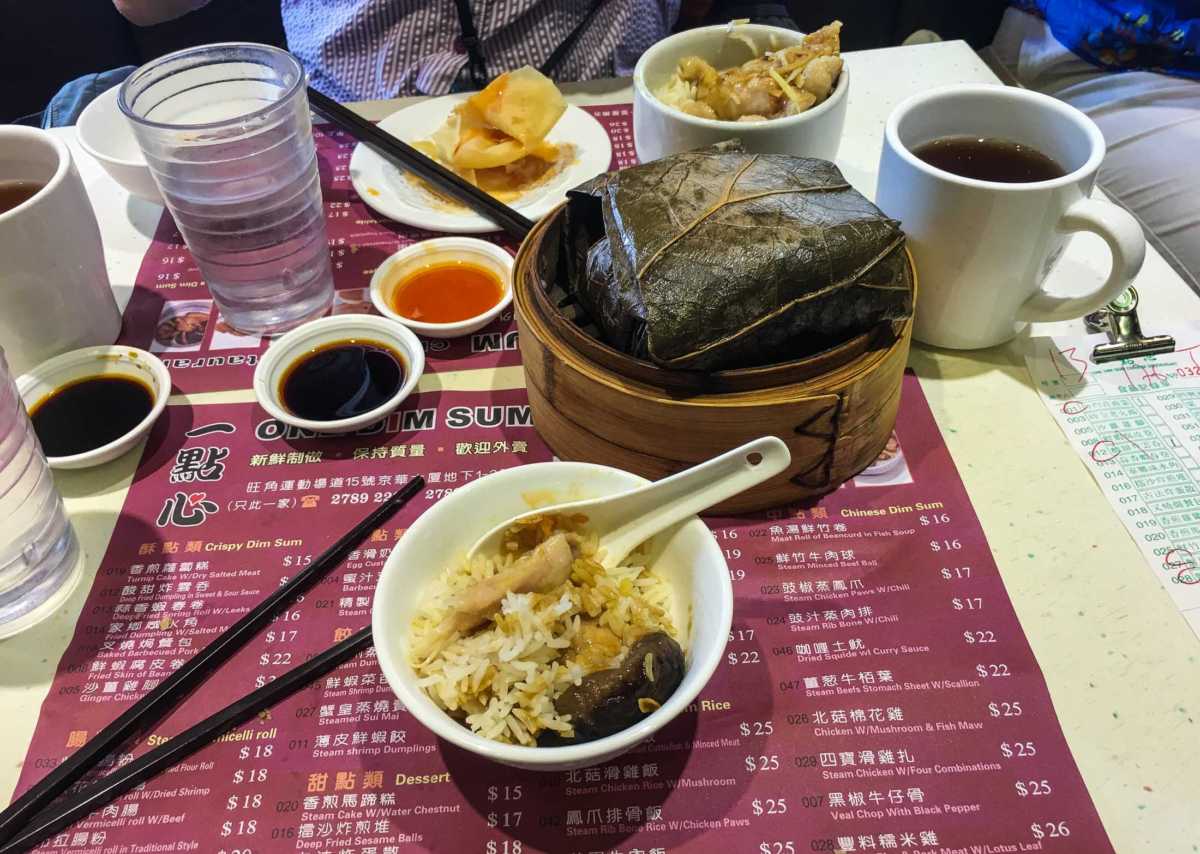
Some of the Best Food
We ate a lot of great food in Hong Kong, but the real Hong Kong specialty is dim sum and there are two great places to get it. The first is Din Tai Fung. There are several locations, but we chose the one in the Silvercord mall, mostly because it was close to us. Din Tai Fung originated in Taiwan, but has spread to many countries, including the US. The original spot in Taiwan was awarded a Michelin star, no easy feat. The menu is placed in front of you, and an order sheet, much like in a sushi restaurant. The pork dumplings are the signature dish. As long as you get those, you can get anything else too, and you'll be happy. If you're feeling especially rich and decadent, order the pork dumpling version which includes truffles. Add in some braised Chinese greens, and you'll actually have a healthy meal, more or less. Go easy on the rice wrapped in lotus leaves, though. It's a big sticky portion and you'll be wasting stomach capacity on something other than dumplings or won ton. Take my word for this. Stick to the dumplings and won tons.
Similar, but a lot less shiny, and considerably cheaper, is One Dim Sum. They're a small local outfit, and the reason you can tell you should eat there is that pretty much any time they are open, forty people will be standing and sitting against the wall outside and it's an hour wait to get in. Again, once you get in, stick to the dumplings and won tons. It's what makes these places great. You can get rice and noodles anywhere.
Getting around on the MRT (Metro) and Buses
Getting around Hong Kong is easy to do, mostly because the transportation systems are well marked and easy to navigate, especially the MRT. And, I'd have to say, the MRT is one of the cleanest, quietest, fastest systems I've ever been on. When you go for your first ride, go to the ticket counter and buy an Octopus Card. The card costs $150 HKD, of which is $50 is a deposit. Each ride has its own fare, not unlike the London Underground, and you swipe the card when you enter and when you exit, and it automatically deducts the appropriate fare. It works on buses, too. You swipe when you get on.
When you leave Hong Kong, don't forget to return your card to the ticket booth and get your deposit back. (Duh, we forgot to do that. Oh well, we're ahead of the game next time we visit.)
Up Your Travel Skills
Looking to book your next trip? Use these resources that are tried and tested by us. First, to get our best travel tips, sign up for our email newsletter. Then, be sure to start your reading with our Resources Page where we highlight all the great travel companies and products that we trust. Travel Accessories: Check out our list of all the accessories we carry to make getting there and being there a lot easier. Credit Cards: See our detailed post on how to choose the right travel rewards credit card for you. Flights: Start finding the very best flight deals by subscribing to Thrifty Traveler. Book your Hotel: Find the best prices on hotels with Booking.com. See all of the gear and books we like in one place on our Amazon shop.Got a comment on this post? Join the conversation on Facebook, Instagram, or Threads and share your thoughts!

